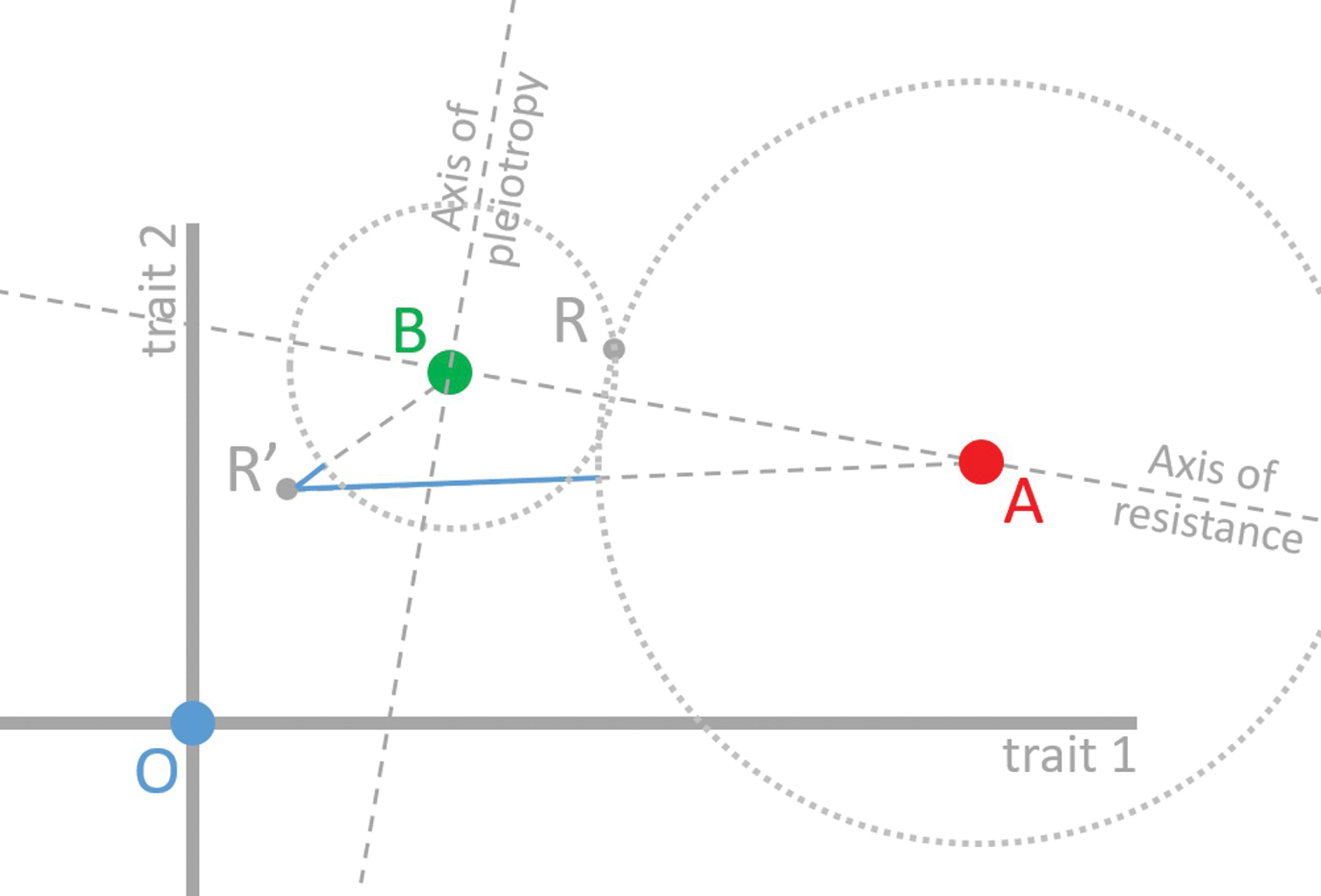
|
||
|
Sketch of treated and non-treated environments, with distinct phenotypic requirements (phenotypic optima A and B, respectively) in a two-trait space. Relative to a wild-type positioned in O, both the resistance mutation R and R’ brings the phenotype closer to A. As in Figure 1, they are therefore both beneficial mutations, to the treated environment, relative to the wild type O. However, if resistance is defined by comparing to a wild-type well adapted to the non-treated environment (i.e. to a wild type located on B), then only mutation R would be beneficial, and therefore could qualify as being a resistance mutation. With this comparison, costs would also be better defined (i.e. would always be positive). As with Figure 1, 2, fitness depends on phenotypic distance and a mapping, which is not illustrated but would correspond to a third orthogonal axis. |